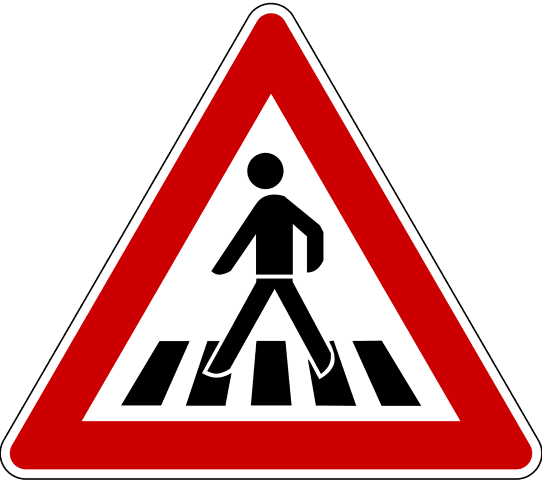Get Quotes
5MinuteInsure.com is not yet available in your area. Check back
soon!
This article has been reviewed by licensed insurance industry expert Moshe Fishman.
Even in our car-dependent society, at one time or another, everyone is a pedestrian who’s at risk of being involved in an accident. After motorcycle accidents, pedestrian accidents are the most dangerous and deadly among all types of motor vehicle accidents.
The statistics on pedestrian accidents and deaths are alarming. According to the Centers for Disease Control (CDC), in 2020, more than 7,000 pedestrians were killed in accidents involving motor vehicles. That boils down to a death occurring every 75 minutes. That is certainly a lot of car accidents involving pedestrians.

Of all the auto accidents that involved fatalities, one in six people who died was a pedestrian. Over 100,000 pedestrians had to be treated for injuries resulting from accidents. And injured pedestrians mean medical bills and often the services of personal injury attorneys.
Children and senior citizens are among the highest group who are at risk when it comes to pedestrian deaths and fatalities. In 2020, 20% of all pedestrian deaths were senior citizens aged sixty-five and older and 20.4% were children under the age of fifteen.
The chances of being killed in a pedestrian car crash increase with age. Senior accident victims ages sixty-five and older are more likely to die in an accident than younger people, partly because older people are less physically resilient.
As a driver, it’s your responsibility to keep your eye on the road. So many things can go wrong so quickly as you share the road with other vehicles, bicyclists, skateboarders, and those who might be running or walking. There are many risk factors that increase the likelihood of pedestrian injury accidents that you should be aware of:
Not surprisingly, larger vehicles like vans, minivans, SUVs, and pickups “are substantially more likely than cars” to strike a pedestrian when these vehicles turn. It may be a result of not having a clear view of the road and persons crossing the street. The Insurance Institute of Highway Safety (IIHS) conducted a study that indicated these large vehicles often are involved in these accidents while in the process of a turn.
The design of these vehicles may be a factor as to why these accidents are more likely to occur when the driver is making a turn. According to Wen Hu, Ph.D., a senior research transportation engineer for the IIHS, “It’s possible that the size, shape or location of the A-pillars that support the roof on either side of the windshield could make it harder for drivers of these larger vehicles to see crossing pedestrians when they are turning.”
The study breaks down the likelihood of pedestrian fatalities by vehicle type and whether the driver is making a left or right turn. Compared to a sedan, SUVs are twice as likely, while pickup trucks and vans, and minivans are four times as likely to cause a fatality when making left turns.
These numbers go up drastically when drivers are making right turns. Compared to a sedan, SUVs are 63% more likely and pickup trucks are 89% more likely to cause a fatality.
Because of the size and weight of SUVs, trucks, vans, and pickup trucks, these vehicles are more likely to cause severe injuries and deaths as compared to sedans. Other design elements of these vehicles such as height and long front ends could also be responsible for impeding drivers’ ability to see pedestrians.
Being involved in a pedestrian collision can be an extremely stressful event. Knowing that you have unintentionally caused harm to another person can cause a great deal of anxiety. But there are other consequences for drivers that could be a result of striking someone with your vehicle, especially if you are found driving recklessly or under the influence. For example, you could face fines, criminal charges, go to jail, have your license revoked, and/or face a civil lawsuit that has been brought against you. These consequences, however, can vary by state. In addition, you will likely be responsible for paying the person’s medical costs and possibly their loss of work wages.
Drivers are always at fault when it comes to collisions that involve pedestrians, even if they are jaywalking. So, it is highly recommended that you seek an attorney who can defend you. If the person you hit secures a personal injury attorney and files a bodily injury claim, you could be liable for their medical expenses including future related bills, pain and suffering, lost income from work, and mental anguish.
Hitting a pedestrian, although unintentional, is possible for even the most careful of motorists. Pedestrians can be unpredictable and run out into the street at any given moment. Drivers should take the following precautions to avoid hitting pedestrians.
Unfortunately, as pedestrians, not every vehicle on the road may be able to see you. Pedestrians should take the following precautions to stay safe and avoid being involved in an accident.
Both drivers and pedestrians should always stay alert for dangers while on the road. Don’t assume that another vehicle or person can see you. Drivers are cautioned to “drive defensively,” and pedestrians should use the same philosophy to protect themselves from others.